The AMD Threadripper 2 CPU Review: The 24-Core 2970WX and 12-Core 2920X Tested
by Ian Cutress on October 29, 2018 9:00 AM ESTGaming: Ashes Classic (DX12)
Seen as the holy child of DirectX12, Ashes of the Singularity (AoTS, or just Ashes) has been the first title to actively go explore as many of the DirectX12 features as it possibly can. Stardock, the developer behind the Nitrous engine which powers the game, has ensured that the real-time strategy title takes advantage of multiple cores and multiple graphics cards, in as many configurations as possible.
As a real-time strategy title, Ashes is all about responsiveness during both wide open shots but also concentrated battles. With DirectX12 at the helm, the ability to implement more draw calls per second allows the engine to work with substantial unit depth and effects that other RTS titles had to rely on combined draw calls to achieve, making some combined unit structures ultimately very rigid.
Stardock clearly understand the importance of an in-game benchmark, ensuring that such a tool was available and capable from day one, especially with all the additional DX12 features used and being able to characterize how they affected the title for the developer was important. The in-game benchmark performs a four minute fixed seed battle environment with a variety of shots, and outputs a vast amount of data to analyze.
For our benchmark, we run Ashes Classic: an older version of the game before the Escalation update. The reason for this is that this is easier to automate, without a splash screen, but still has a strong visual fidelity to test.
| AnandTech CPU Gaming 2019 Game List | ||||||||
| Game | Genre | Release Date | API | IGP | Low | Med | High | |
| Ashes: Classic | RTS | Mar 2016 |
DX12 | 720p Standard |
1080p Standard |
1440p Standard |
4K Standard |
|
Ashes has dropdown options for MSAA, Light Quality, Object Quality, Shading Samples, Shadow Quality, Textures, and separate options for the terrain. There are several presents, from Very Low to Extreme: we run our benchmarks at the above settings, and take the frame-time output for our average and percentile numbers.
All of our benchmark results can also be found in our benchmark engine, Bench.
| Game | IGP | Low | Medium | High |
| Average FPS | 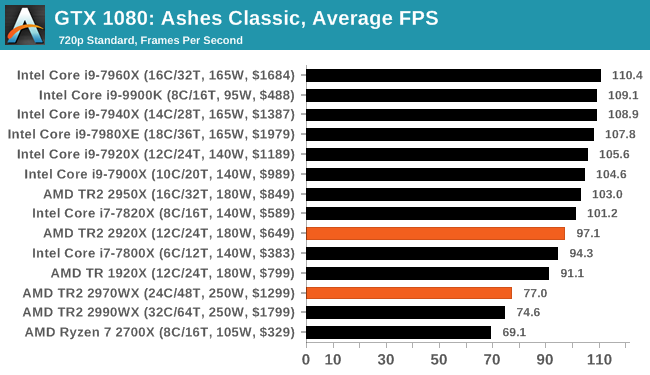 |
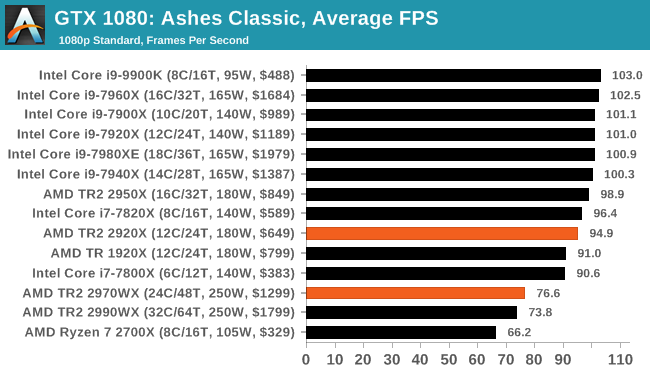 |
 |
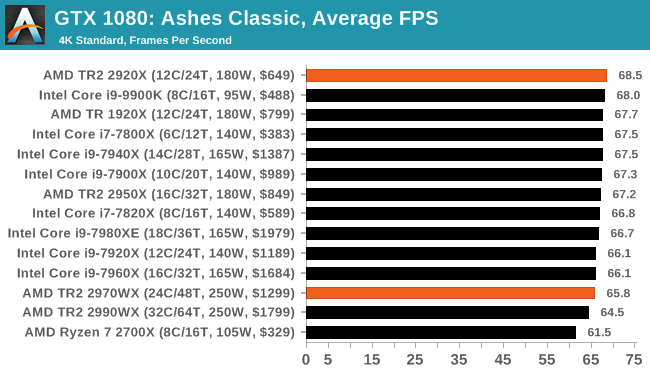 |
| 95th Percentile | 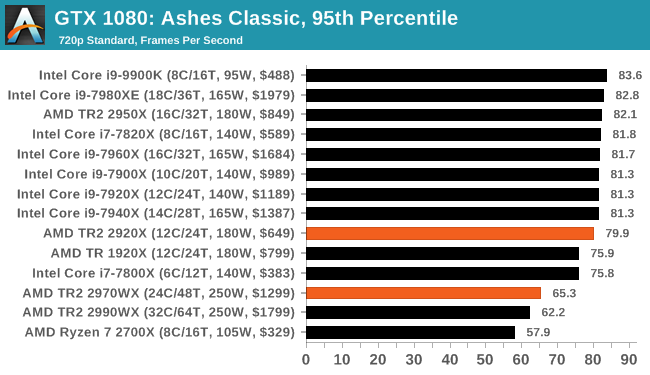 |
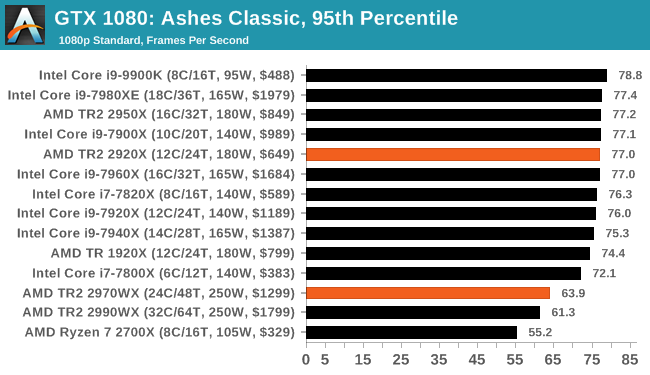 |
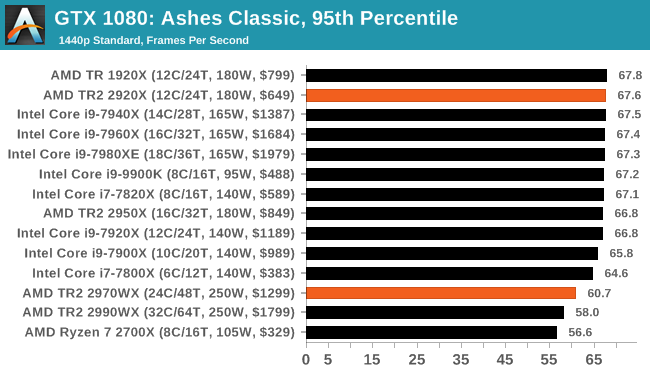 |
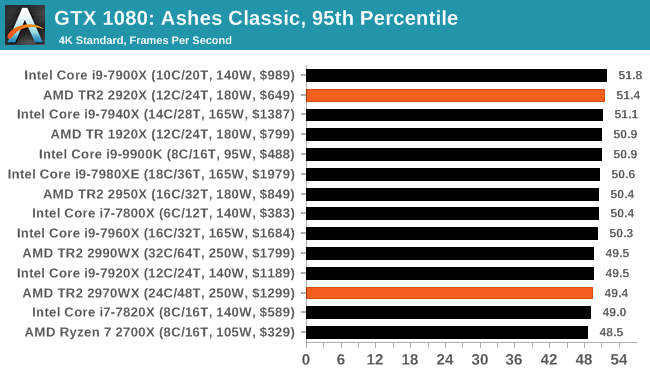 |












69 Comments
View All Comments
peevee - Monday, October 29, 2018 - link
You don't have real workstation tests except for Chromium compile, and even that is apparently broken (for example, no /Gm on the projects or something like that).Schmich - Monday, October 29, 2018 - link
Your ads are one of the worst of tech blogs. Distracting ads with moving items. Dynamic resizing of the slow loading header ads, so by the time you want to click on something you've clicked on something else. Autoplaying videos that follow you down as you read the article. No wonder people install adblock but strangely blogs call the readers a problem.peevee - Wednesday, October 31, 2018 - link
Somebody reading anandtech who does not use adblocking?I am genuineley shocked.
And it's not a blog.
firestream - Monday, October 29, 2018 - link
Can someone test the those in-memory business application like Qlikview? It should be very interesting whether TR2 can replace the developer machine who are crunching large amount of dataset to build dashboard or analytic.crotach - Tuesday, October 30, 2018 - link
Damn, this i9-9900k is a beast! It even looks like good value for money when compared like this.SanX - Wednesday, October 31, 2018 - link
What the problem with AMD AVX or test's AVX?GreenReaper - Wednesday, October 31, 2018 - link
AMD's AVX units are limited due to the Zen architecture. Basically, they cut stuff down into 128-bit chunks but only certain modules can do certain things. AVX2 requires work over two instructions. And it can't do AVX-512 yet. This might well have been the appropriate decision - after all, wider units means more to go wrong, and more power. But it limits performance on AVX workloads.Henk Poley - Saturday, November 10, 2018 - link
I wonder when they'll include a few high performance cores for single core heavy tasks. Kinda ridiculous that an iPad Pro / iPhone XR can get +33 to +50% better performance on Speedometer 2.0Henk Poley - Saturday, November 10, 2018 - link
It could be cool to throw in a 4-core Intel Core i7-7740X, which appears to be fairly efficient in multicore performance. I wouldn't be surprised if it held up decently at the bottom spot, but using much less cores.